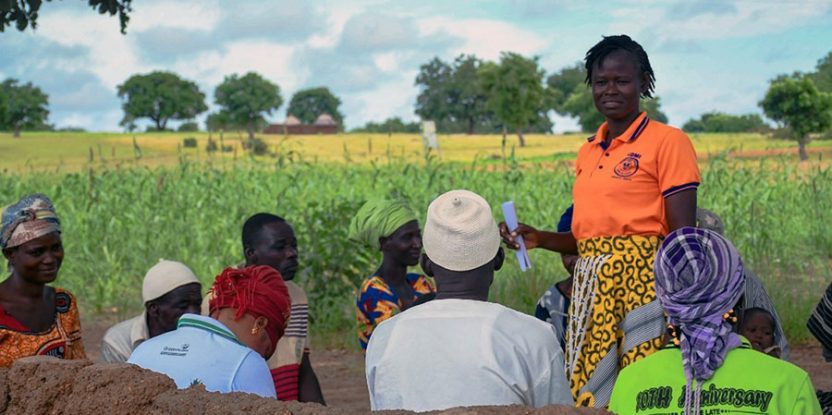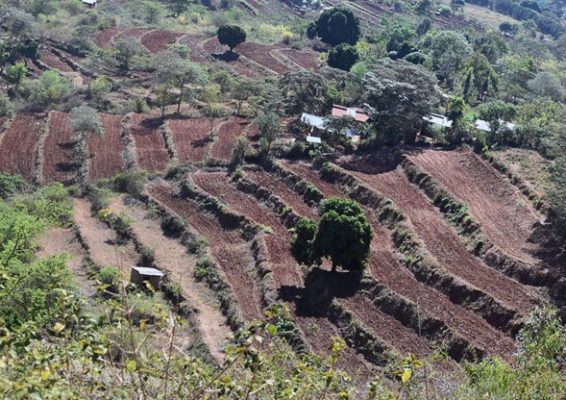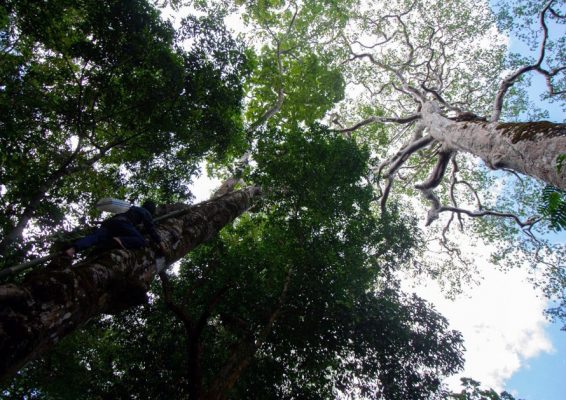
When leaders from 141 countries signed the Glasgow Declaration on Forests and Land Use, a critical step had been made in recognizing forests as critical in achieving the Sustainable Development Goals and the Paris Agreement.
However, what will it take to achieve these commitments? How have governments “walked the talk” so far and what support is needed to reach the six key efforts declared by the world leaders?
Some seven months after the Declaration, national representatives, speakers for indigenous peoples, and researchers all noted that while some progress had been made in its implementation, the involvement of local communities, political goodwill and adequate financing were still required to walk the talk on the Glasgow Declaration.
The experts were speaking in a webinar on 14 June 2022 as part of the Bonn Climate Change Conference. Many who had experience with global climate-change and land-restoration programmes — such as Stibniati Atmadja who has been heavily involved in studying the international programme for Reducing Emissions from Deforestation and Forest Degradation (REDD+) — said Glasgow’s commitments need monitoring so that nations will not fall behind.
“The Glasgow declaration highlights that the USD 100 billion per year financing goal was not met in 2020. Money is tight and we need to monitor if rich countries meet their funding commitments”, she said. “Another side of that is ensuring we use the funds well, to bring real climate, biodiversity and social benefits. Unfortunately, we don’t know because global data linking climate funds to those outcomes is still poor.”
Pham Thu Thuy, CIFOR-ICRAF’s lead of the Climate Change, Energy and Low-carbon Development team who also moderated the webinar, delved into specific scenarios from countries that have already started realizing the Glasgow goals.
In Viet Nam, for example, where most of the country’s 42 percent of forest is owned by the Government, Vu Tan Phuong from the Viet Nam Forest Certification Office said there were still glaring gaps in aligning the country’s progress with the goals. Viet Nam is experiencing high pressure on its forests while there is low payment for natural forest protection and weak law enforcement.
“To operationalize the Glasgow pledge, the country needs to strengthen land-use planning and involve environmental impact assessments across all levels of projects with proper involvement of all stakeholders,” said Vu.
Helen Magata from the Philippines’ Tebtebba Foundation argued that the Glasgow commitments were key to breaking the barriers between climate-change projects and indigenous people.
Yet, she said, there were few incentives to bring on board indigenous people, who own and use the land that is the central part of the Glasgow commitments.
“Forests do not exist in silos, they are linked to indigenous people, their culture and socialization, hence, indigenous people must be involved and right of tenure respected to achieve meaningful progress under the Glasgow goals,” she said.
Indigenous people needed to access climate finance in a sustainable way that would enable them to implement interventions within their immediate priorities, according to Magata.
Christopher Martius, CIFOR-ICRAF’s Bonn Hub leader and managing director for Germany, noted that the Glasgow declaration contains commitments to “transformative further action in the interconnected areas of sustainable production and consumption”; to facilitating “sustainable commodity production and consumption”; and to increased efforts to “implement and … redesign agricultural policies and programmes to incentivise sustainable agriculture, promote food security, and benefit the environment”. He said that in this context in particular there is need to intervene comprehensively in food systems to curb carbon emissions that contribute to the climate crisis.
“Food systems are not just agriculture,” he said. “There is transport and processing as well and while we get nutritional security it also generates externalities like soil degradation and loss of biodiversity.” Emission reductions in this area might be relatively easy to be had and also would generate other co-benefits such as biodiversity and reduction of fossil fuel use.
In the Democratic Republic of Congo, several actions have been undertaken since the UNFCCC COP26, including the signature of the second letter of intent between the Government and the Central African Forest Initiative (CAFI), the revision and the submission of the second NDC, numerous discussions on the organisation of the upcoming COP27; the legal review of the forestry concessions done by the General Inspection of Finances (IGF); the adoption by the Senate of the law on the protection and the promotion of Pygmies. There is still more to do, according to Blaise-Pascal Ntirumenyerwa Mihigo, associate professor of International Environmental Law at the University of Kinshasa.
“We need to achieve political commitments on forests and related sectors, to reorganize forest sector based on the IGF recommendations, national appropriation of forest and climate actions, sufficient finances, linking science and policies, etc. to accelerate our commitment to the Glasgow goals, Mihigo said.
Under the Glasgow Declaration, the signatory world leaders committed to work collectively to halt, and reverse, forest loss and land degradation by 2030 while delivering sustainable development and promoting an inclusive rural transformation.
Sustainable land-use transitions are expected to help in meeting the Paris Agreement’s goals, including reducing vulnerability to the impacts of the climate crisis, holding the increase in global average temperature to below 2 °C while pursuing efforts to limit it to 1.5 °C.
We want you to share Forests News content, which is licensed under Creative Commons Attribution-NonCommercial-ShareAlike 4.0 International (CC BY-NC-SA 4.0). This means you are free to redistribute our material for non-commercial purposes. All we ask is that you give Forests News appropriate credit and link to the original Forests News content, indicate if changes were made, and distribute your contributions under the same Creative Commons license. You must notify Forests News if you repost, reprint or reuse our materials by contacting forestsnews@cifor-icraf.org.

